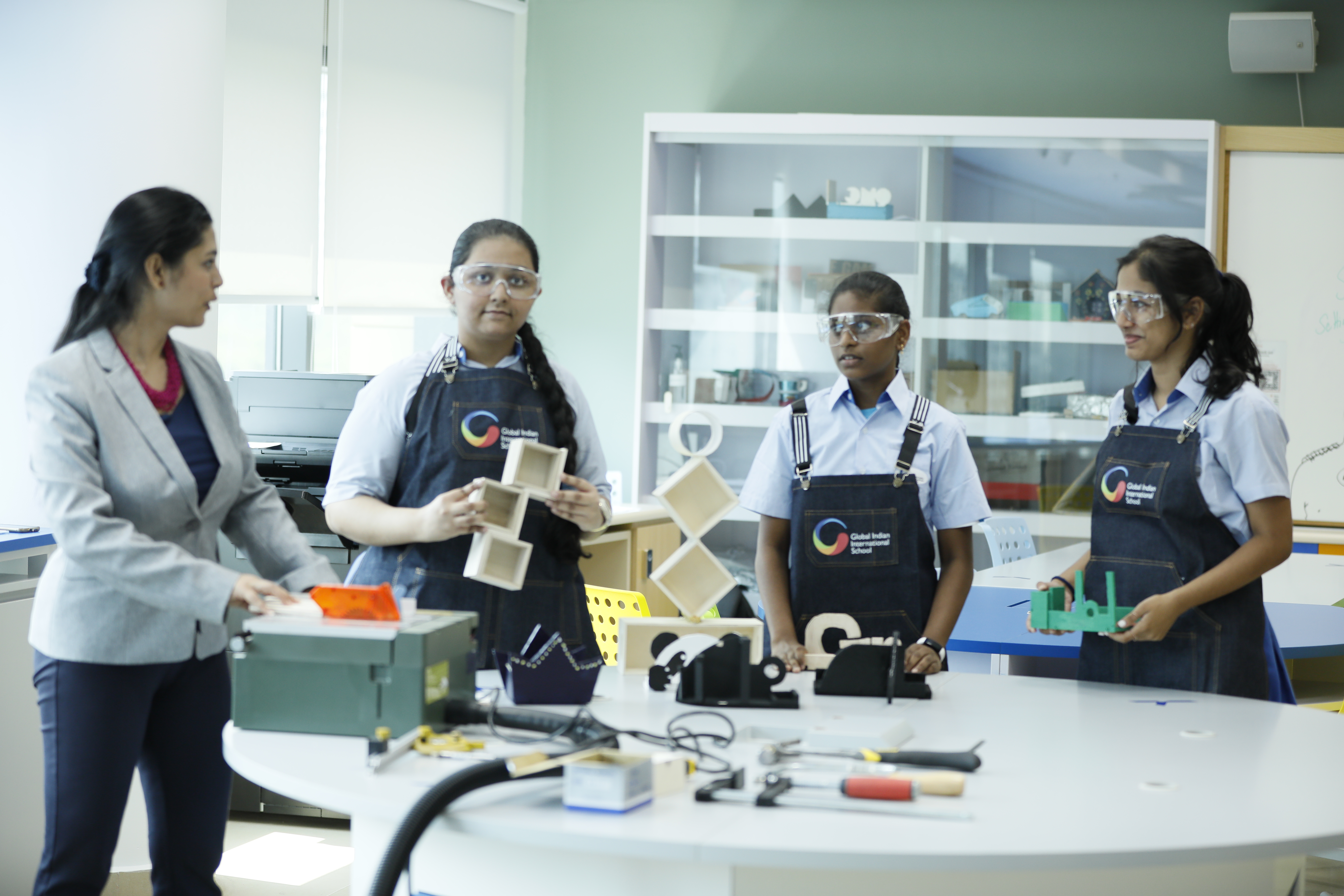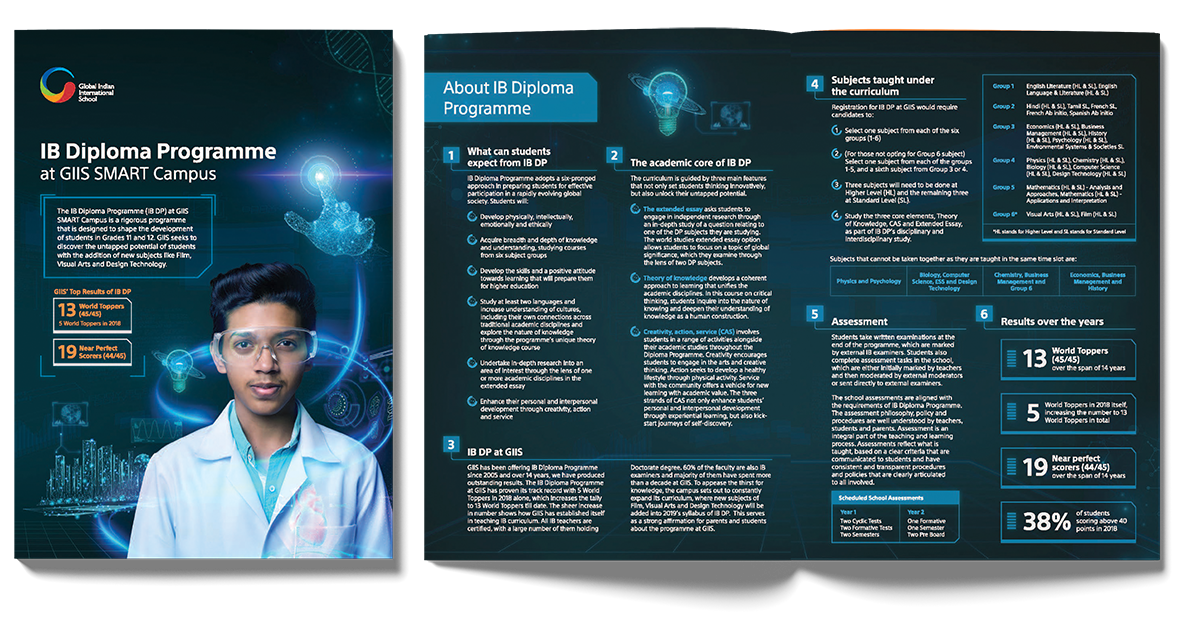When visiting a primary school section, like here in GIIS, it is usual to expect students involved in colourful, fun-looking playful group activities as part of their curriculum.
But, what can you expect to find in the secondary school?

Child development psychologists Jean Piaget and Lev Vygotsky had an essential role in understanding how children learn. They found that children construct their knowledge for cognitive growth through their experiences in activity-based problem solving - which Piaget identified as 'playing'. These theories - collectively developed into socio-constructivism - influenced educators such as John Dewy and Maria Montessori. These also are referenced in Cambridge's and the IB's recommended approaches to learning (ATL's) which include developing thinking skills, social skills, communication skills, self-management skills and research skills.
GIIS's experienced teachers fully incorporate these approaches in lessons, not more so when utilising GIIS's state-of-the-art learning spaces and labs. These learning spaces provide the environment and opportunities for interactions to foster deeper learning.
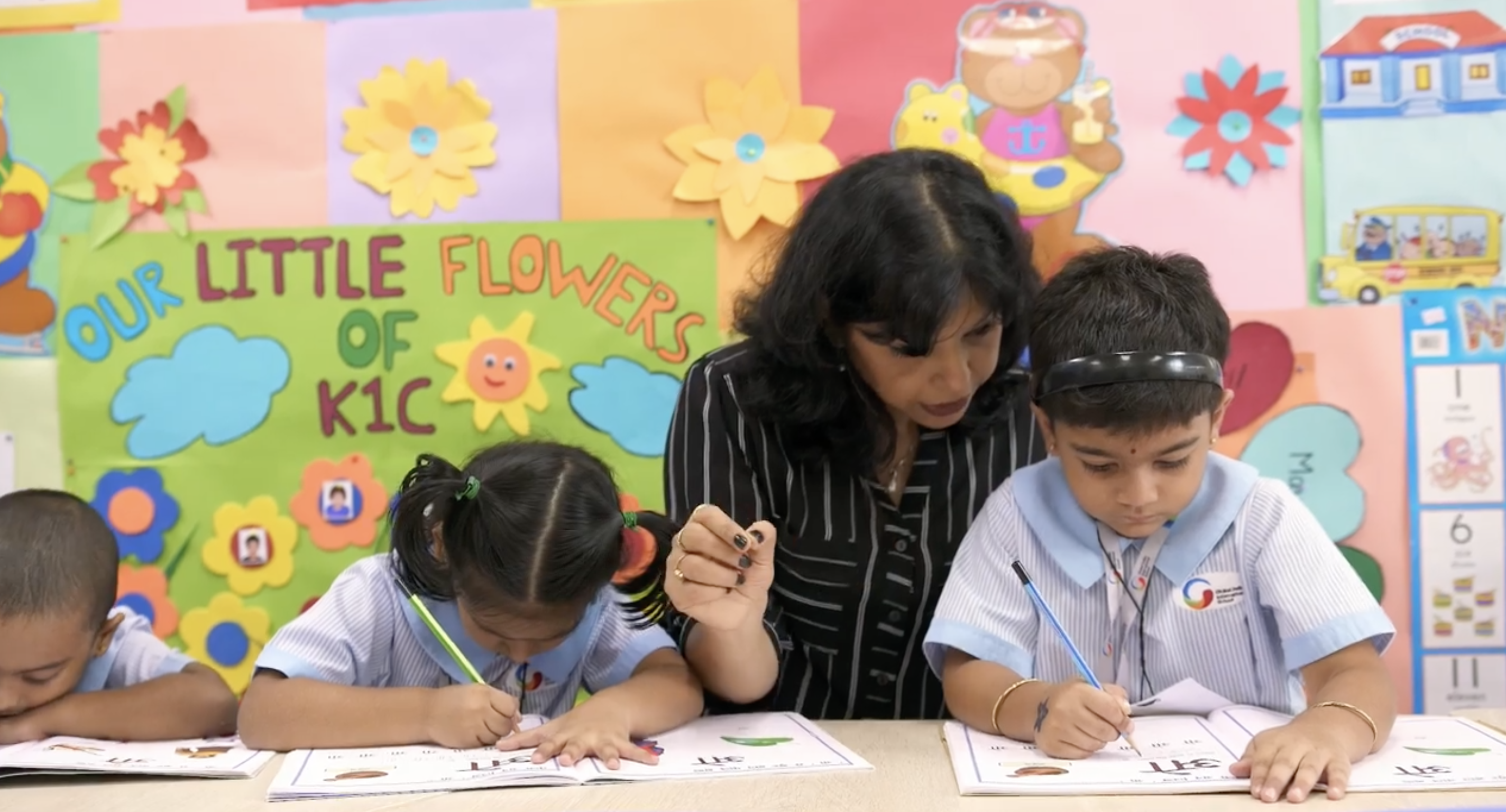
There are over forty different specially designed learning areas and purpose-built 'labs' in the SMART Campus. By providing platforms to collaborate, inquire, reflect and self-learn, GIIS allows students to develop the skills necessary for their growth.
Collaboration outside the classroom is supported by the 'Learning Commons' areas outside the classrooms with high tables, stools and plug sockets for students to work together or work alone.
Inquiry-based learning is supported by the fully equipped science, environmental and mathematics labs. Creativity and the arts take pride of place in the ceramics studio, art rooms, dance and yoga room, to name a few.
Language skills are honed in the language labs and IT skills in the computer rooms. Students find additional quiet spaces for reflection and deeper thinking in the tranquil library and beautiful nest area outside near the mist. You can really see how the school environment creates an ambience for learning and achievement.
To understand how these dedicated spaces function, I recently visited the recently opened Design Technology lab - the Maker Space.
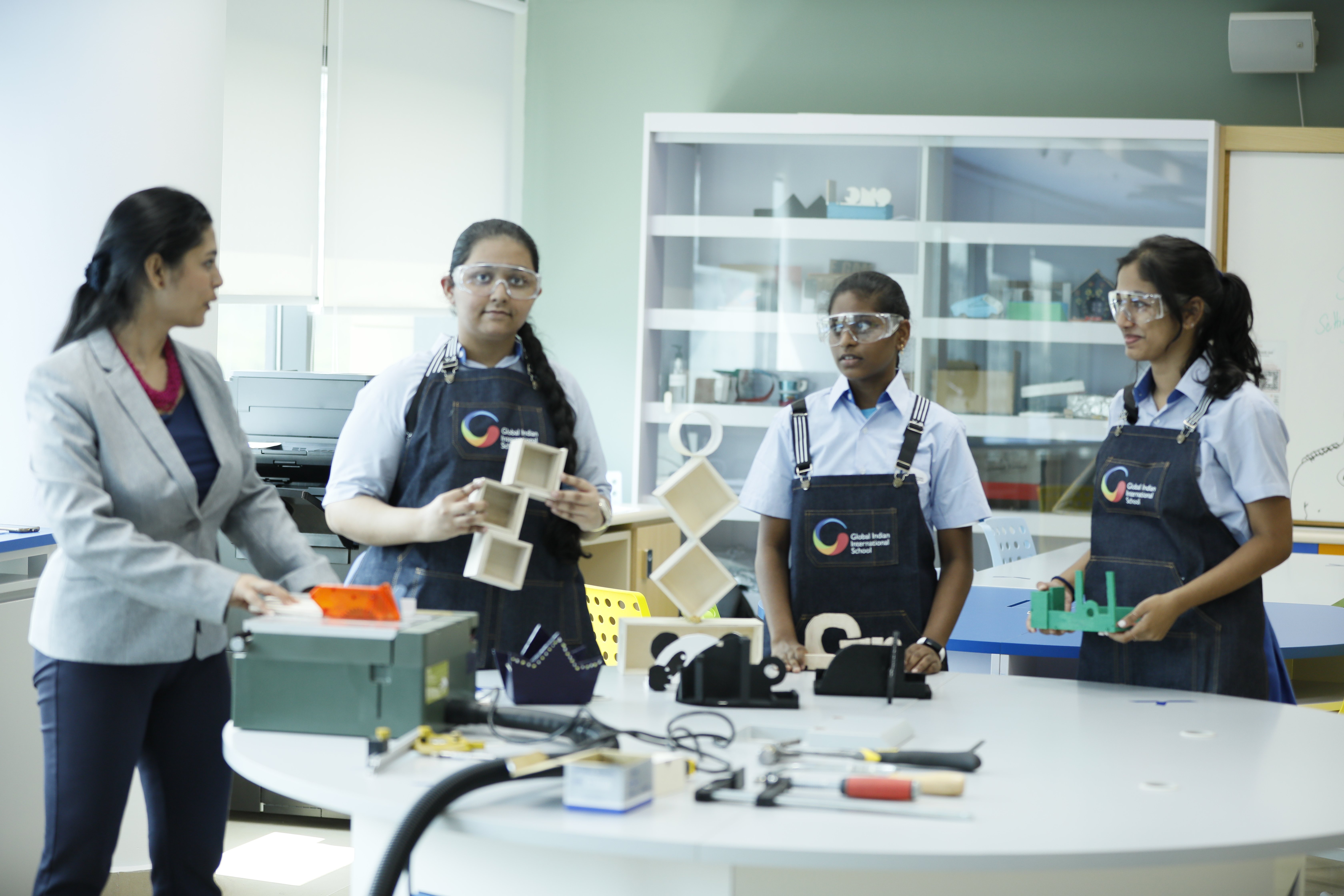
Inside this spacious lab, there are a myriad of machines that are used to support different activities; and different materials to explore newer designs.
There are 3D printers, laser engraving and cutting machines, hand power tools, even Bernina sewing machines, which I am informed, are used to explore other materials such as metal and plywood, not only the normal cloth fabrics you usually expect. Large desks allow students to discuss their ideas, developing them further with feedback from collaboration. You can instantly understand why the children are so excited and motivated to have classes in this learning space.
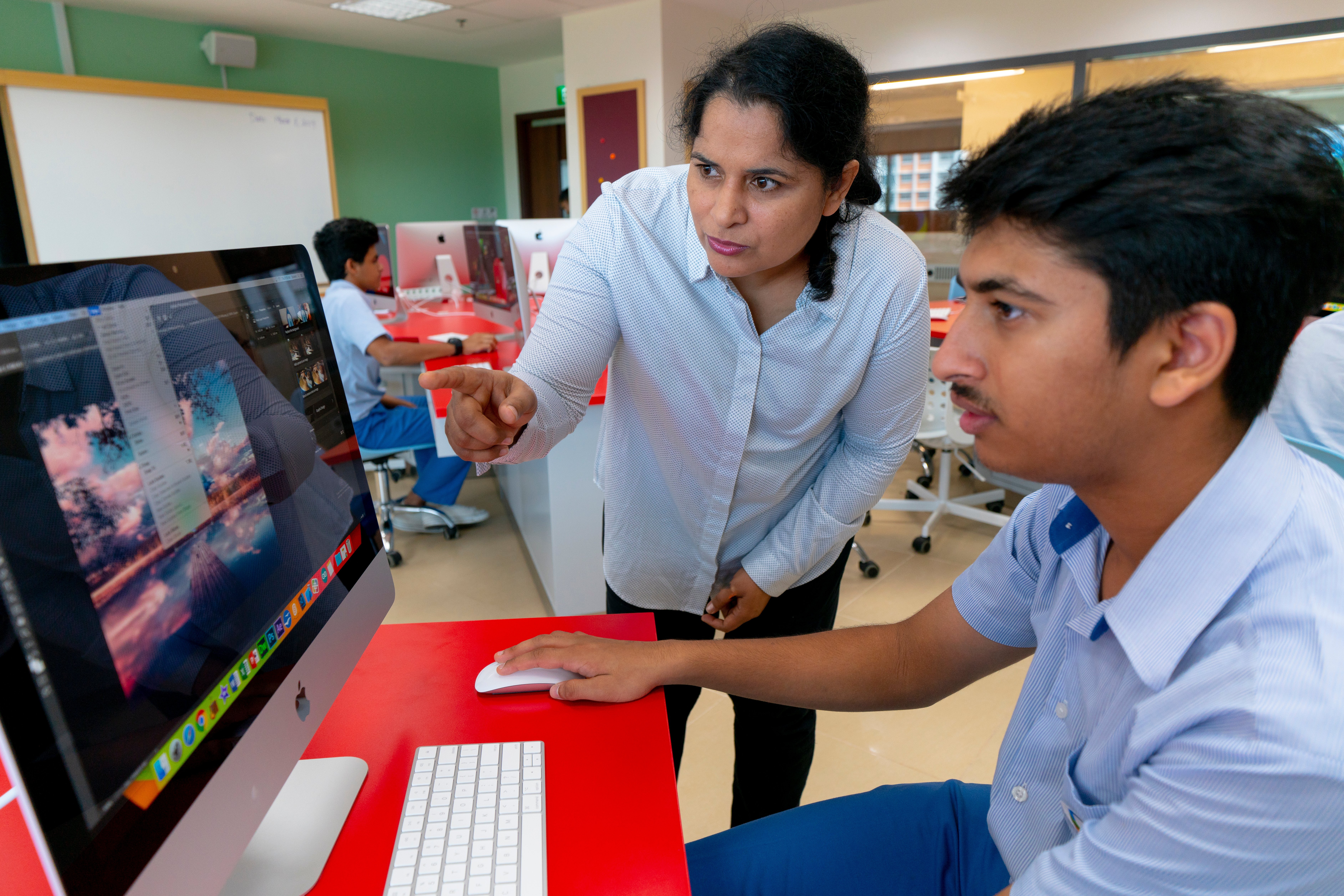
When discussing the student's work with Ms Sonal Khobragade, the Design Technology teacher, I asked more about the students and the courses that use this space. She outlined that students in Grade 8 take Design Technology as an additional subject, and those in Grades 9 &10 have it as a standard course at IGCSE. The IBDP at the school also offers Design Technology course, which is taken by students interested in further exploring innovation, invention, design, material technology and engineering, consumer choice and commercial production.
IB students were invited to join lectures given by experts in these fields. There are also opportunities for students to be part of creator's clubs or as part of STEAM week activities.

Ms Sonal explained that even if lessons being taught online during the Covid lockdown, students could still use their knowledge and understanding to follow the design process steps at home creatively using recycled or reused material. This seamless continuation of their learning online at home gave the students, even more, to discuss and reflect on, and their understanding was even more profound.
On the walls are displayed student ideation boards. These show the design cycle process, which is the interlinked exploration from inspiration to design, market research, testing with implementation, reflection and finally to creation. Many of the actual final pieces of these endeavours are proudly displayed around the room. Games, toys, models and different innovative objects all show the students' creativity come to life.
So 'playing' in secondary school? If 'playing' equates to providing opportunities for learning actively, creatively, and collaboratively then yes, the secondary school students learn by 'play' too!


